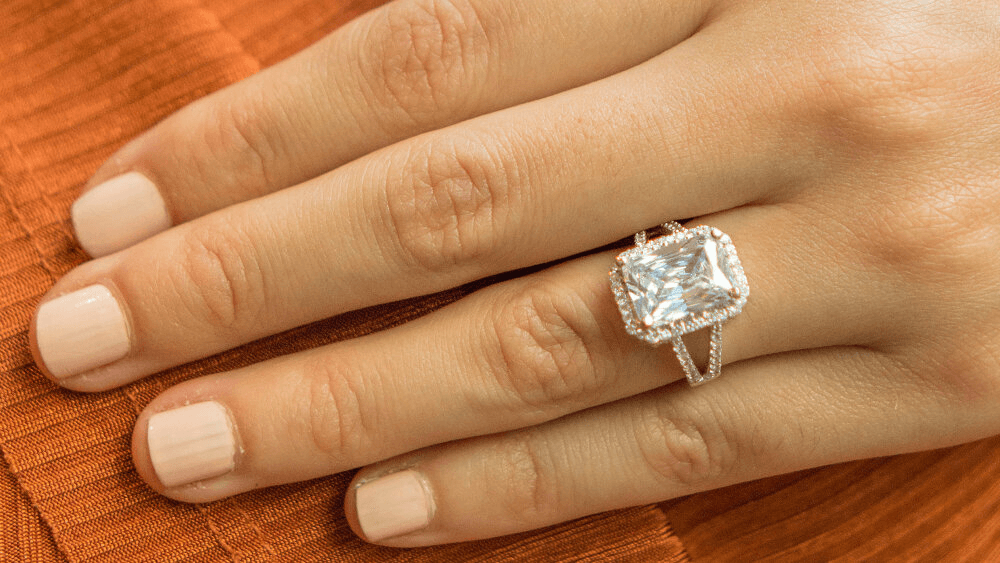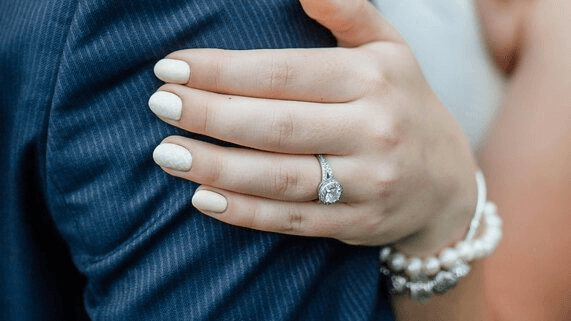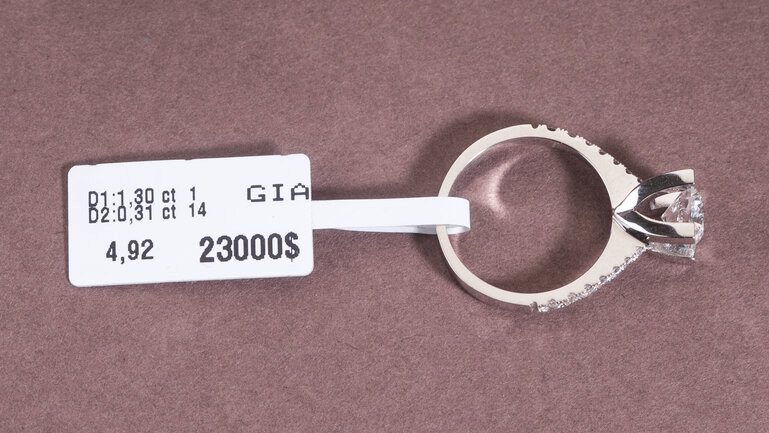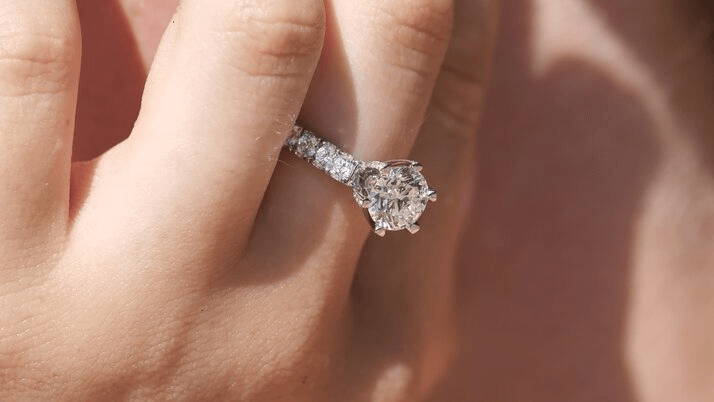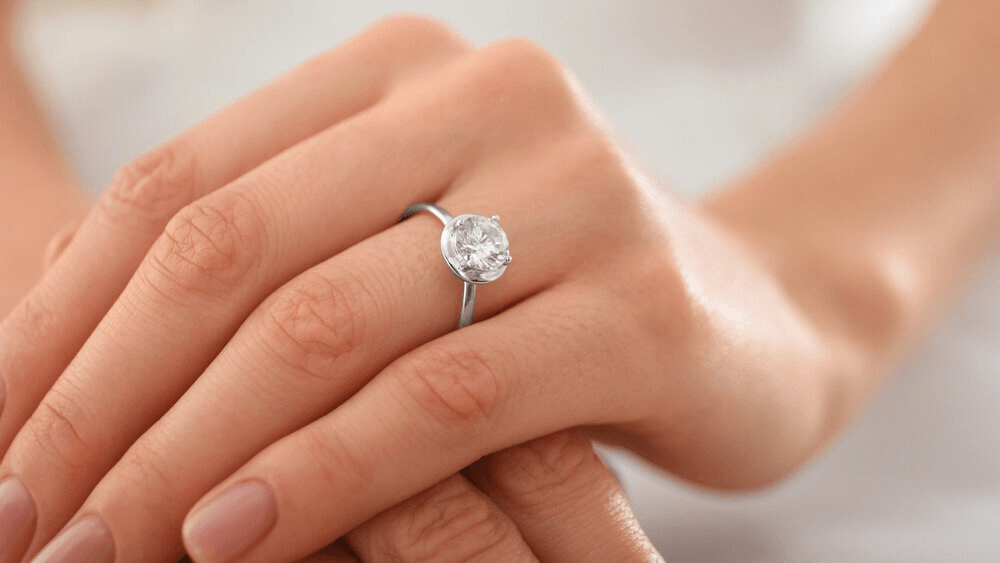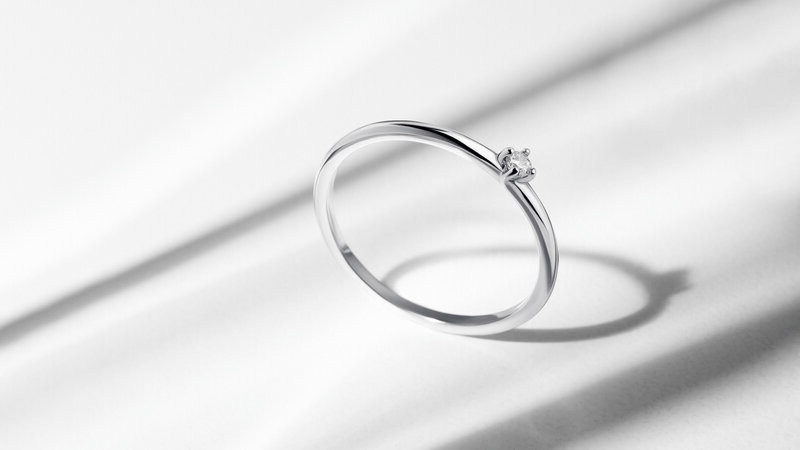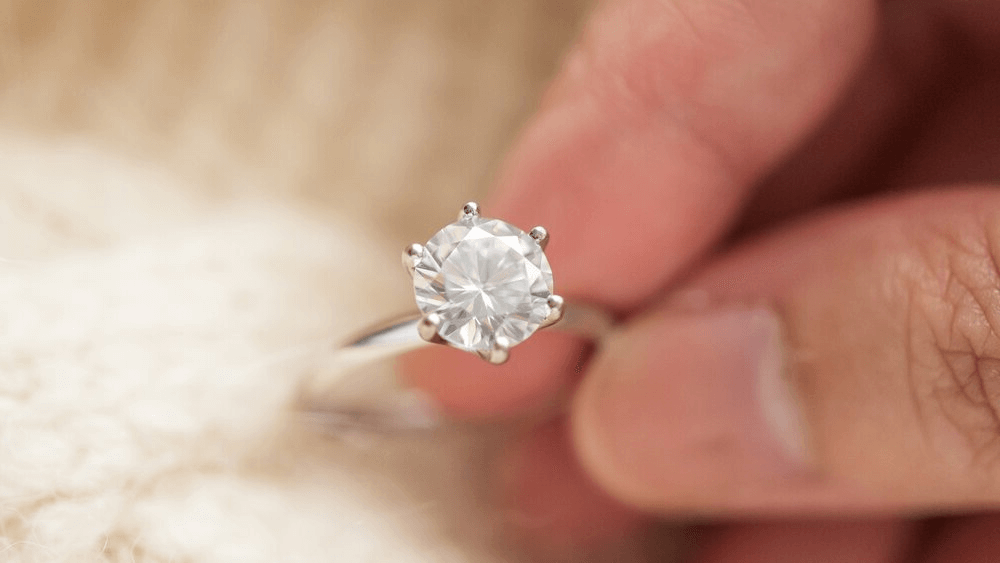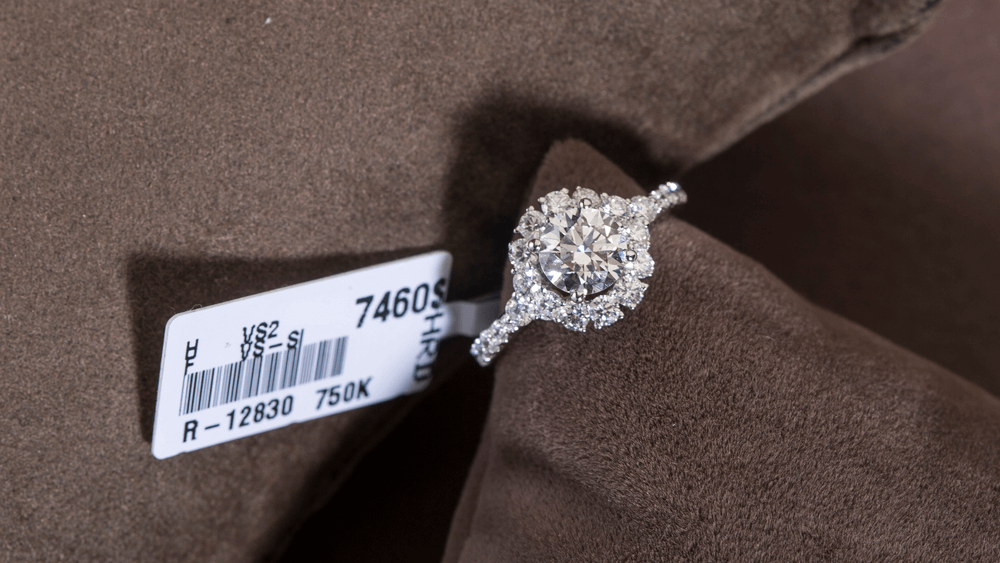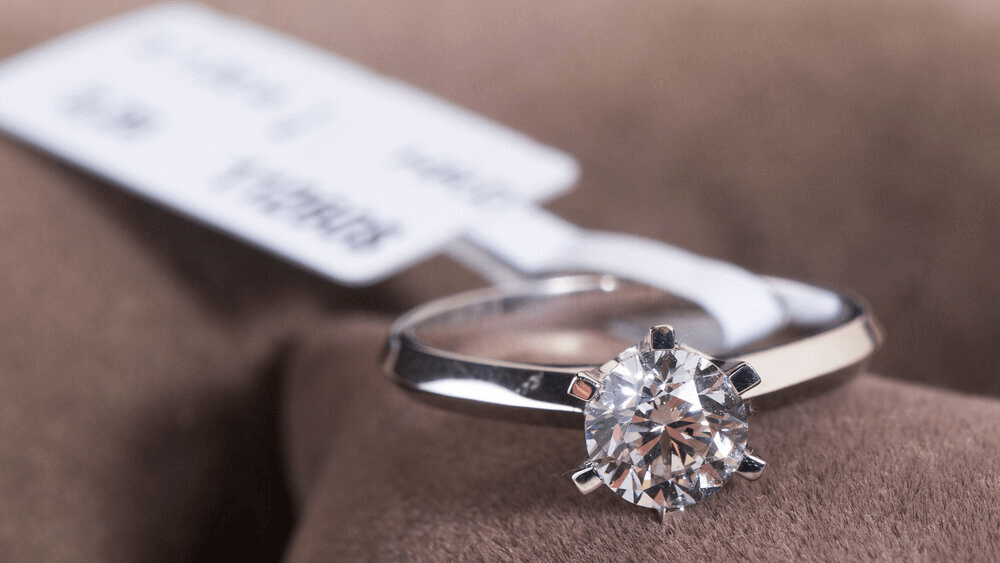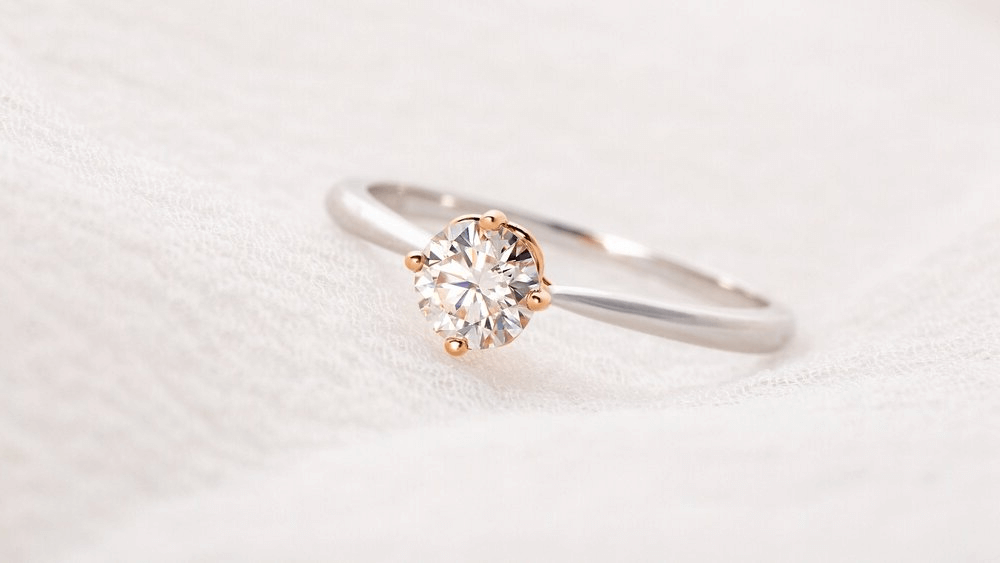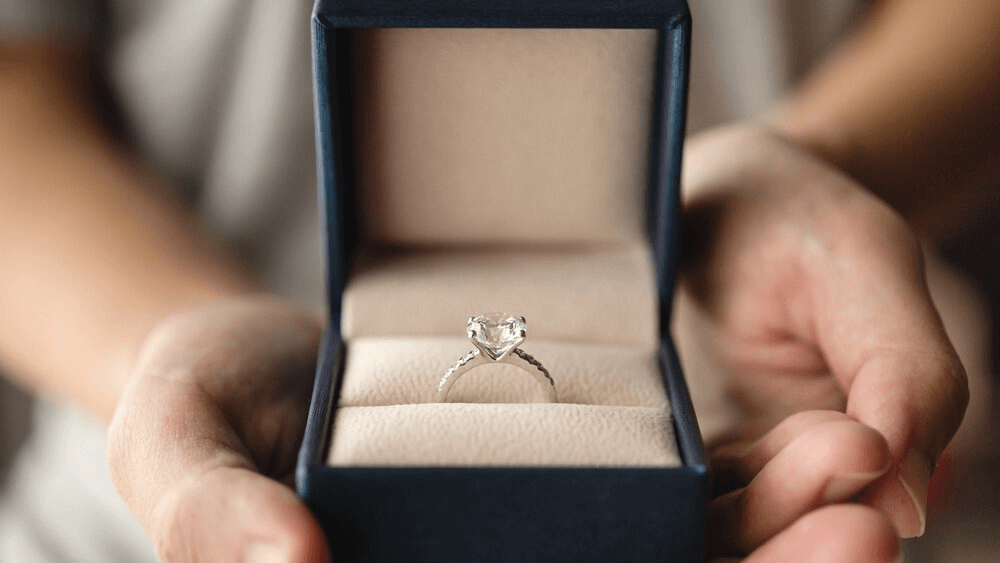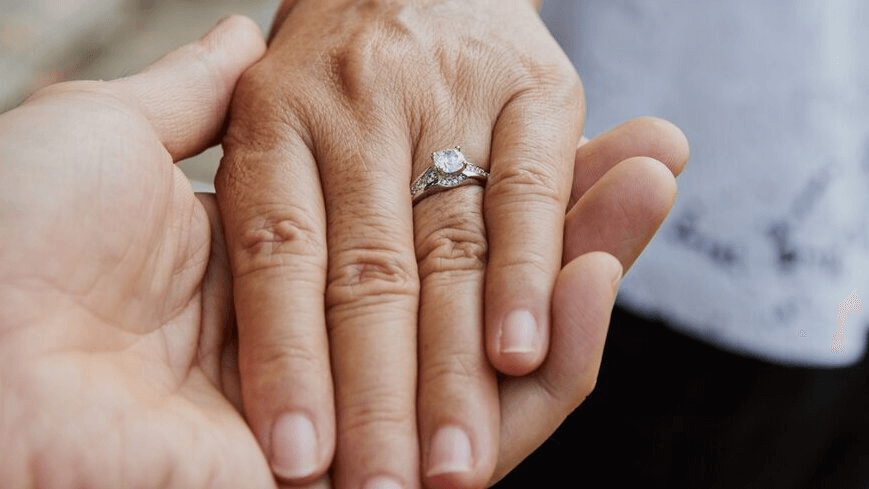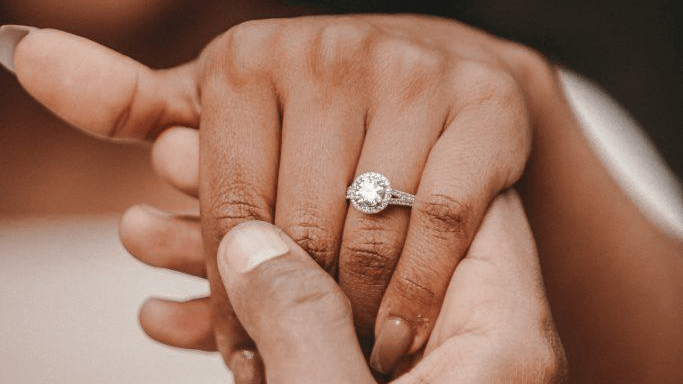Expert Tips On How To Find The Ideal $12000 Engagement Ring

By Gary A.

Edited by Olivia H.
Published Mar 17, 2022
Edited on Feb 25, 2025
With a $12000 engagement ring budget, you have the opportunity to balance both elegance and quality, ensuring your ring is as timeless as your love.
🎧 Listen to our expert insights:

- 6 Quick Tips for Buying a $12,000 Diamond Engagement Ring
- Introduction to $12000 Engagement Rings
- Mastering the $12,000 Budget: Balance and Beauty
- The 4C’s Decoded for a $12,000 Ring
- Understanding Diamond Certification
- Designing the Perfect Setting
- Our Expert Take
- 7 FAQs
- Recently Purchased $12000 Engagement Rings for Inspiration
Before we dive deeper into the specifics, here are some practical tips to help guide your decision-making process:
6 Quick Tips for Buying a $12,000 Diamond Engagement Ring
When investing in a diamond engagement ring, especially in the $12,000 range, it’s crucial to pay attention to several key aspects to ensure you get the best value and a ring that truly symbolizes your love and commitment. Here are some practical tips:
- Tip 1: Understand the 4Cs Thoroughly Cut: Look for a diamond with an excellent or very good cut grade. The cut quality has the most significant impact on a diamond’s brilliance and overall appearance. Clarity: Aim for a clarity grade where inclusions are not visible to the naked eye. VS1 or VS2 clarity grades often offer the best combination of appearance and value. Color: Choose a color grade that appears white relative to its setting. G to I color diamonds usually provide a good balance of colorlessness and value. Carat: Consider the carat weight in context with the other Cs. A slightly smaller carat weight can significantly reduce the price without a noticeable difference in size.
- Tip 2: Examine the Diamond’s Certification: Ensure the diamond comes with a certification from a reputable lab like GIA or AGS. This certificate will provide an unbiased analysis of the diamond’s 4Cs and confirm its authenticity.
- Tip 3: Prioritize Diamond Shape and Style: Determine the preferred diamond shape, as it influences the ring’s overall appearance. Classic shapes like round, princess, or oval can offer different aesthetics. The setting style also plays a crucial role. For a $12,000 budget, settings like solitaire, halo, or side-stone can complement the center diamond elegantly.
- Tip 4: Balance the Center Stone and Setting Costs: Allocate your budget between the center stone and the ring setting wisely. You might opt for a simpler band to allocate more budget to a higher-quality diamond.
- Tip 5: Consider the Ring’s Metal and Durability: Choose a durable metal that complements the diamond. Platinum and white gold are popular choices for their durability and ability to enhance the diamond’s brilliance. Check the construction quality of the ring. A well-made ring should have a secure setting that properly holds the diamond.
- Tip 6: Be Mindful of the Ring’s Proportions: Pay attention to the ring’s proportions and how they complement the wearer’s finger. The diamond’s size should be in harmony with the band’s width and the wearer’s finger size.
Now that you’ve got these practical tips, use Jeweler AI below to find the perfect engagement ring that suits your style and budget:
Introduction to $12000 Engagement Rings
It doesn’t take a long-time industry expert to realize that, when it comes to budgeting for an engagement ring, $12,000 will open plenty of doors for you. Sure, it’s not blow-everything-out-of-the-water extravagant, but it’s significantly more than what the majority of shoppers have to play with in the months leading up to their proposals.
It’s not a competition, but knowing what the rest are doing is one of the easiest ways to ‘center’ yourself in this new world.
Mastering the $12,000 Budget: Balance and Beauty
But, beyond centering yourself, you’ve also got to figure out how to break down a $12,000 budget and, more importantly, how to get the very most out of it. While it’s true that this will open plenty of doors in terms of the diamond and ring design, there are also some doors that, put simply, you don’t need to open. Being smart about your money means ultimately winding up with more, rather than less, than what you bargained for.
So, where to start? Here’s our guide to spending $12,000 on an engagement ring the right way.
Allocating Funds: Diamond vs. Setting
We’re generally big proponents of shoppers sticking to the 80:20 rule for engagement rings. That is, spending 80 – 83% of the budget – in your case, $9,600 – $10,000 – on the diamond, and reserving the other 20% for the setting and ring design. This doesn’t always pan out. For instance, if you’re looking at a diamond solitaire design, you probably only need to set aside around $1,000 for the setting, but keep $10,000 as a rough, ballpark figure until do your research and shop with reputable vendors.
$10,000 is an excellent budget for a diamond. Consider the fact that the average spend (within the US) on an engagement ring is around $6,000 – meaning that around $4,800 – $5,000 of that budget is paid toward the diamond. So, in other words, with a budget of $10,000, you’ve got around twice as much to spend on your diamond as the average shopper.

The 4C’s Decoded for a $12,000 Ring
Personal preferences like shape, size, fluorescence, and setting aside, you should always return to this list before pushing your money in any direction.
Carat: Size in Harmony with Quality
A diamond budget of $10,000 will be enough for you to comfortably shop the 1 to 1.5 carat range, without having to make any major sacrifices regarding your diamond’s quality.
Remember that diamond value increases exponentially with its carat weight. While the ‘average’ budget of $6,000 is enough to accommodate a 1 carat diamond, that’s certainly not a guarantee that, at $10,000, you’ll find a 2 carat diamond worth investing into.
The typical price range for a 1.5 carat diamond is $5,000 – $36,000. Try not to get caught up on either extreme, since a $5,000 1.5 carat diamond will be of the lowest quality (too low to be worth the investment), while a $36,000 1.5 carat diamond will be of unnecessarily high quality (for instance, FL clarity and D color).
$10,000 is a pretty strong position for 1.5 carat diamonds, since it doesn’t leave you at the very low end of this price range.
The average price range for a 2 carat diamond is between $8,500 and $58,000. The same rules apply here but, as you can probably tell, there is less scope for finding a worthwhile investment here. Sure, it’s not impossible, but ticking every box in terms of quality will mean that, for the most part, 2 carats is out of your price range.
After all, that’s the key thing to remember: not all diamonds priced within your range will be worth investing in. In fact, a substantial number of the diamonds priced within your range will represent terrible investments – wastes of your money – and a disappointment waiting to happen for your engagement ring.
You’ve still got to be smart about this, and accept that there are a number of non-negotiables any shopper of any budget can afford to follow during their search…
Cut: The King of Sparkle
More than any other aspect of diamond quality, strong grades for Cut (applicable for Round Brilliant diamonds), Symmetry and Polish are absolutely paramount. No shopper, when looking to get the best value for money possible, should consider sacrificing the cut quality of their diamond since cut quality influences a diamond’s sparkle more than any other feature.
A flawless, colorless diamond with a poor cut will appear dull, lifeless, and second-rate compared with a slightly included, near colorless diamond with an Excellent or Very Good cut grade.
Disregard any diamond that has been graded Good, Fair, or Poor in these categories.
Beyond those grades, however, you’ll want to take a look at the diamond’s unique measurements and proportions.
These are included in any GIA report and, while the GIA does not stipulate any ideal proportions for diamond cuts, our guide to diamond proportion details the right parameters for your chosen shape. These parameters are standard across the industry, and diamonds cut outside of those proportions will be significantly less valuable to you.
These diamonds can appear too flat, too wide, overly elongated, unattractively shallow, or deep or, worse still, dull and lacking any strong sparkle.
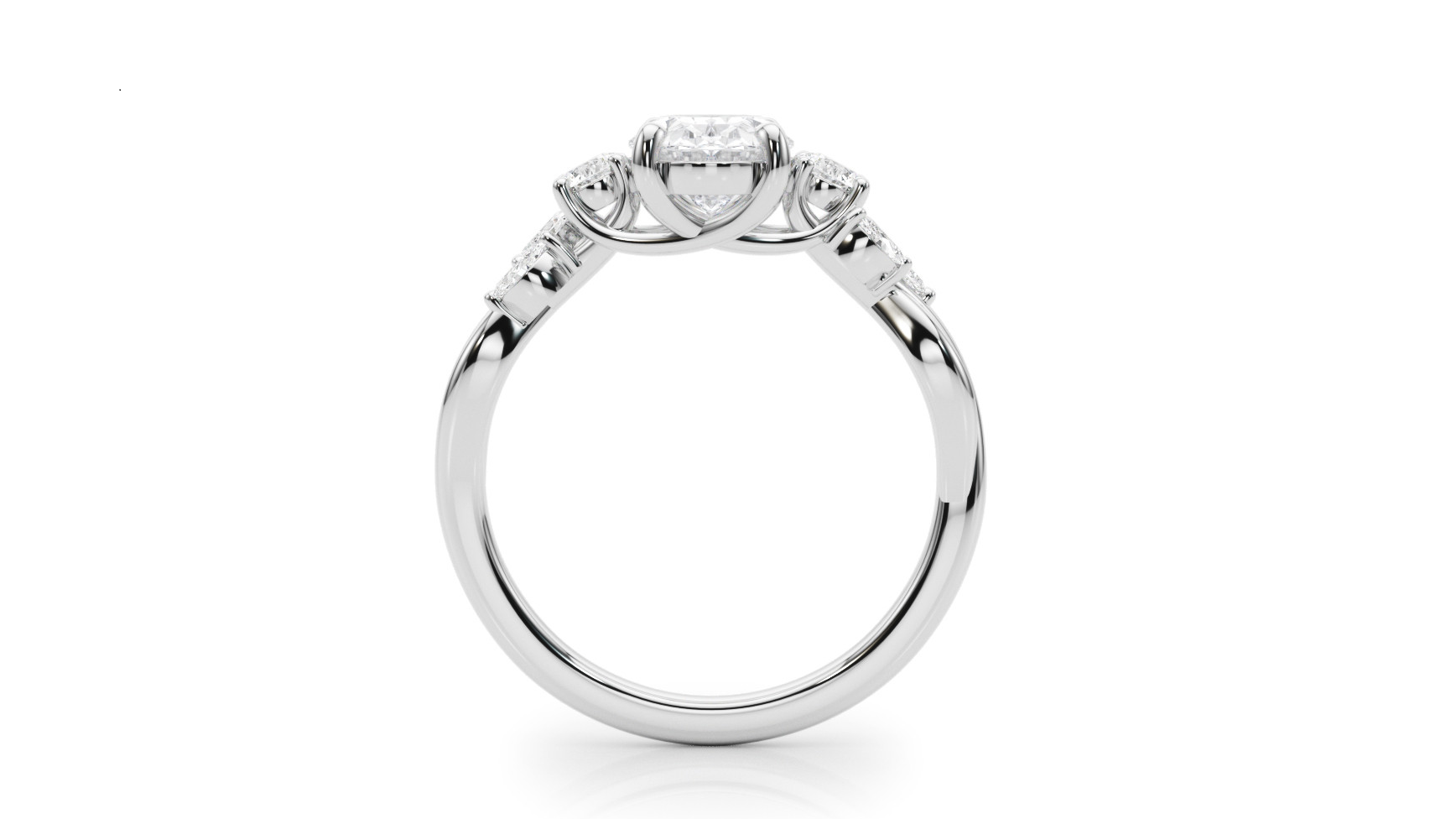
Clarity: Eye Cleanliness Over Perfection
First of all, you do not want to waste your money on a diamond that is brought down by any visible inclusions. If you can see them without magnification then, even if you think they’re minor now, they will seem all too obvious when you and the wearer are looking at the diamond every single day.
But there’s more to the eye cleanliness debate than that. The most obvious solution to ensuring your diamond doesn’t have any visible inclusions is to make sure it doesn’t have any inclusions at all but, even on a large budget, this is a poor investment.
Diamonds further down the clarity scale are significantly less expensive, but many of them are still eye clean. For 1 carat diamonds, a clarity grade of VS2 or SI1 is generally the best option; if your diamond is slightly larger, take a look at VS1 and VS2 diamonds for the best value for money.
Color: Finding the Sweet Spot
The GIA’s color scale runs from D through Z. While D color diamonds are totally free from color, the higher grades (around E through I or J) tend to appear free from color, even though a skilled gemologist is able to detect some hints of yellow or brown under magnification.
Like clarity, there is no specific ‘best grade’ for shoppers. The best color grade will be one that offers the appearance of colorlessness, but the value of a diamond is not graded at the very top of the scale.
Larger diamonds tend to show off color more than smaller diamonds. If you’re looking at the 1 – 1.5 carat range, then stick to the color grades G, H, and I. These are part of the Near Colorless category of color grades, and offer the best value for money.
Avoiding Enhancements
Diamonds that have gone artificial enhancements are seen as a second-rate choice across most of the industry. This isn’t just because the natural beauty and uniqueness of the diamond is being ‘overridden’ by artificial processes, but also because these enhancements can undermine the diamond’s strength and beauty significantly.
We never sell diamonds that have undergone artificial enhancements.
Understanding Diamond Certification
We talk a lot about diamond certification at WillYou.com and, beyond our own site, you will find a similar story across the board. Why? Because diamond certification – a process that takes place before your diamond makes its way into the jewelry store – is what enables sellers to determine the value of the diamond.
There is no ‘set price’ for 1 carat, 2 carat, or 10 carat diamonds. Every diamond on sale today is a unique, natural gemstone with its own characteristics, flaws, and attributes.
Many different labs offer diamond certification for vendors and jewelers, but we only recommend diamonds graded by the GIA as worthwhile investments. Ultimately, however, the bottom line is this: do not waste your time or money on any jeweler who does not sell certified diamonds.
The Art of Smart Engagement Ring Shopping: Selecting a Trusted Jeweler
It’s obvious that, whether you’re spending $2,000 or $200,000, finding a reputable jeweler is one of the most important initial steps you will take. There are way too many opportunities for first-time buyers to make a mistake or misstep, or to run afoul of one of the many diamond scams out there – or, even more commonly, to invest their money into something that they haven’t had the opportunity to fully understand and appreciate.
Beyond that, however, an investment of this magnitude warrants the expertise and creative guidance only an expert vendor and jeweler can bring to the table. Your own concept for the diamond and the ring can only take you so far; looking at how experts have sorted diamonds and how other experts can set that stone is the next step. Experts are experts for a reason.
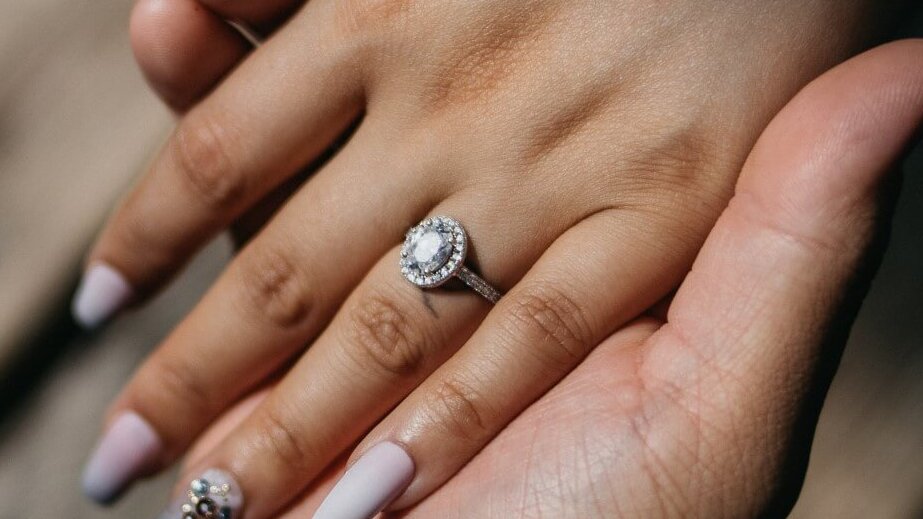
We created WillYou with the simple purpose of demystifying and simplifying the process of shopping for a diamond engagement ring. We only sell diamonds that we believe represent strong investments for our customers. And how do we know? Our 11-step internal checking process is there to complement the diamond’s GIA report and take all the guesswork out of the process of buying a diamond.

Designing the Perfect Setting
A budget of around $2,000 is a great amount to have on your side as you design a suitable setting for your diamond. It means that the higher quality materials like platinum and 18K gold are well within your reach, as are diamond accents and, of course, a jeweler’s creative expertise – like our partners, A. Jaffe.
Classic Solitaire to Intricate Pavé
If you’ve picked out a diamond around the 1.5 carat range, then the obvious choice to show off the size and beauty of your stone is a solitaire or cathedral setting. If you’re worried about missing out on making any creative decisions, then don’t be – you’ll still want to consider the types of prong settings that complement your diamond the best, whether you’ll want to go minimalistic with four prongs or bolder with six or eight prongs, the shape of your ring’s shank (for instance, knife-edge or tapered), and, of course, the metal.
The great thing about a diamond of this weight, however, is it’s not too big to accommodate other design details like halos, pavé, accent stones, filigree or milgrain.
Exploring Unique Ring Styles
With a comfortable amount of wiggle room in your budget, you’ve got the freedom to explore a wider range of unique and contemporary designs. Raising the CTW (carat total weight) of your ring with a few additional accent diamonds won’t send your final bill skyrocketing, as smaller diamonds are worth considerably less than the type of diamond you’ll be looking at for your center stone.
Consider pushing the boat out a little with a three-stone or two-stone (toi et moi) engagement ring, or by swapping out the normal pavé setting with a few larger accent stones on the center diamond’s shoulders.
For inspiration, just take a browse Jeweler Ai.
Our Expert Take
One of the first things we would urge any shopper on a $12,000 budget to do is slow down, take stock, and recognize that even a strong, robust budget needs to be treated with the same caution and understanding a shopper with a budget half the size needs to exercise.
Why? Because, in the grand scheme of things, $12,000 is still a limited number to work with. There are engagement rings two, five, or ten times the value you’ve got to spend, and it would be all too easy for you to invest a portion of that money into a diamond that you don’t gain the most possible benefit from.
We’re not trying to downplay your budget, but to ensure that, as you move into this process, you’re ready to spend it as wisely as anyone else, and not to assume that everything available to you at that price point is worth paying for.
Take your time, but enjoy the process – and, most importantly, make sure to come away with something to be proud of.
7 FAQs
- Q: What diamond size can I expect with a $12,000 engagement ring?
- A: With a $12,000 budget, you can typically expect to find diamonds in the 1 to 1.5 carat range, depending on the other qualities like cut, color, and clarity.
- Q: Is it possible to get a high-quality diamond for $12,000?
- A: Yes, a budget of $12,000 allows you to purchase a high-quality diamond. Focus on balancing the 4Cs to get the best quality within your budget.
- Q: Should I spend the entire budget on the diamond or save some for the setting?
- A: It’s advisable to balance your budget between the diamond and the setting. While the diamond is the centerpiece, a well-crafted setting can enhance its beauty.
- Q: What are the best diamond shapes for engagement rings within this budget?
- A: Popular diamond shapes within a $12,000 budget include round, princess, oval, and cushion cuts. The choice depends on personal preference and style.
- Q: Can I find a good selection of engagement rings for $12,000 online?
- A: Yes, many reputable online jewelers offer a wide selection of engagement rings at this price point, with detailed information and certification for each diamond.
- Q: How important is the diamond’s certification for a $12,000 ring?
- A: Diamond certification is crucial, as it assures the quality and authenticity of the stone. Look for certifications from reputable organizations like GIA or AGS.
- Q: Are there hidden costs I should be aware of when buying a $12,000 engagement ring?
- A: Be aware of potential additional costs such as sales tax, shipping fees, and insurance. It’s also wise to consider future costs for maintenance and possible resizing.
Discover your dream $12,000 engagement ring with Jeweler AI. Experience a tailored journey to the perfect ring that speaks volumes of your love and commitment!
Here are more specific budget topics to browse:
- Get the Diamond Glow: Stunning Engagement Rings Under $1000
- Unlocking Luxury for Less: Navigating Engagement Rings Under $2000
- $3,000 Engagement Rings: Dazzling Elegance on a Budget!
- $4000 Diamond Ring: A Smart Buyer’s Guide to Exceptional Value
- The Smart Shoppers Guide to a $5000 Diamond Engagement Ring
- Step-by-Step Guide: How to Find a Dazzling $6000 Engagement Ring
- $7K Diamond Rings: Maximize Your Brilliance and Value!
- Avoid the Pitfalls: How to Smartly Spend $10000 on an Engagement Ring
- Unlocking the Mystique: What Can a $15,000 Engagement Ring Truly Offer?
- Unlocking the Secrets: What Does a $20,000 Engagement Ring Truly Offer?
- $25,000 Engagement Ring Secrets: Discover the Luxury!
- $30,000 Engagement Ring: Is It Worth the Luxe Price?
- $50K Engagement Rings: See Why They’re Worth Every Penny!
Recently Purchased $12000 Engagement Rings for Inspiration
When analyzing the table of recently purchased engagement rings, it becomes clear that there is a fascinating array of styles and price points available within the $12,000 budget. Most notably, the table showcases both natural and lab-grown diamonds, with prices ranging from just over $12,000 to nearly $14,000, highlighting the diverse options that couples can explore. For instance, the Rose Gold Round Natural Diamond Engagement Ring at 1.50 carats is priced at $12,024, presenting an attractive choice for those who favor traditional styles combined with contemporary rose gold. In contrast, the 5 Carat Lab Grown Emerald Diamond Celtic Knot Gold Engagement Ring offers a unique twist for those drawn to larger, more elaborate designs, priced at $12,408. The table also underscores the importance of understanding diamond shapes and settings, as seen with various cushion cut and halo engagement rings, which often feature prominently among higher-priced options. This data not only provides insight into popular trends but also serves as a helpful guide for prospective buyers looking to make informed decisions about their own purchases.
| Ring | Type | Price |
| Rose Gold Round Natural Diamond Engagement Ring (1.50 Carat) | Natural | $12,024 |
| 2 Carat Cushion Flat Solitaire Natural Diamond Engagement Ring | Natural | $12,033 |
| 2 Carat Ideal Radiant Cut Natural Diamond Ring In Platinum | Natural | $12,205 |
| 1 Carat Natural Diamond Wedding Ring Set (Oval Natural Diamond) | Natural | $12,215 |
| 5 Carat Lab Grown Emerald Diamond Celtic Knot Gold Engagement Ring | Lab Grown | $12,408 |
| Custom 2 Carat Ruby and Natural Diamond Heart Three Stone Engagement Ring | Natural | $12,519 |
| Custom Princess Cut Engagement Ring (1.50 Carat Natural Diamond) | Natural | $12,559 |
| 2 Carat Natural Diamond Cushion Cut Halo Engagement Ring In Platinum | Natural | $12,833 |
| Custom 4 Carat Lab Grown Oval Diamond Engagement Ring with Tapered Baguette Side Stones | Lab Grown | $12,875 |
| Oval Pave Natural Diamond Ring In White Gold (2 Carat) | Natural | $12,907 |
| Oval Petite Halo Natural Diamond Engagement Ring (2 Carat) | Natural | $13,116 |
| 2 Carat Emerald Natural Diamond Hidden Halo Engagement Ring | Natural | $13,254 |
| Near Flawless 1.51 Carat Natural Diamond Emerald Cut Pave Engagement Ring | Natural | $13,485 |
| 1.5 Carat Princess Natural Diamond Halo Ring In White Gold | Natural | $13,535 |
| 1.52 Carat Radiant Cut Natural Diamond Engagement Ring | Natural | $13,554 |
| 2 Carat Princess Cut Natural Diamond Engagement Ring In Rose Gold | Natural | $13,588 |
| 2 Carat Split Shank Engagement Ring With Natural Diamond Halo | Natural | $13,614 |
| Custom 1.32 Carat Kite Princess Flat Solitaire Natural Diamond Engagement Ring | Natural | $13,660 |
| 2 Carat Pear Shaped Natural Diamond Engagement Ring In Gold | Natural | $13,736 |
| 1.80 Carat Oval Natural Diamond Petite Pave Engagement Ring | Natural | $13,792 |
| Tapered 2.21 Carat Radiant & Trillion Natural Diamond Engagement Ring | Natural | $13,804 |
| Bespoke Cross Bead Set Natural Diamond Ring (1.48 Carat) | Natural | $13,886 |
FOLLOW-UP GUIDE SERIES

